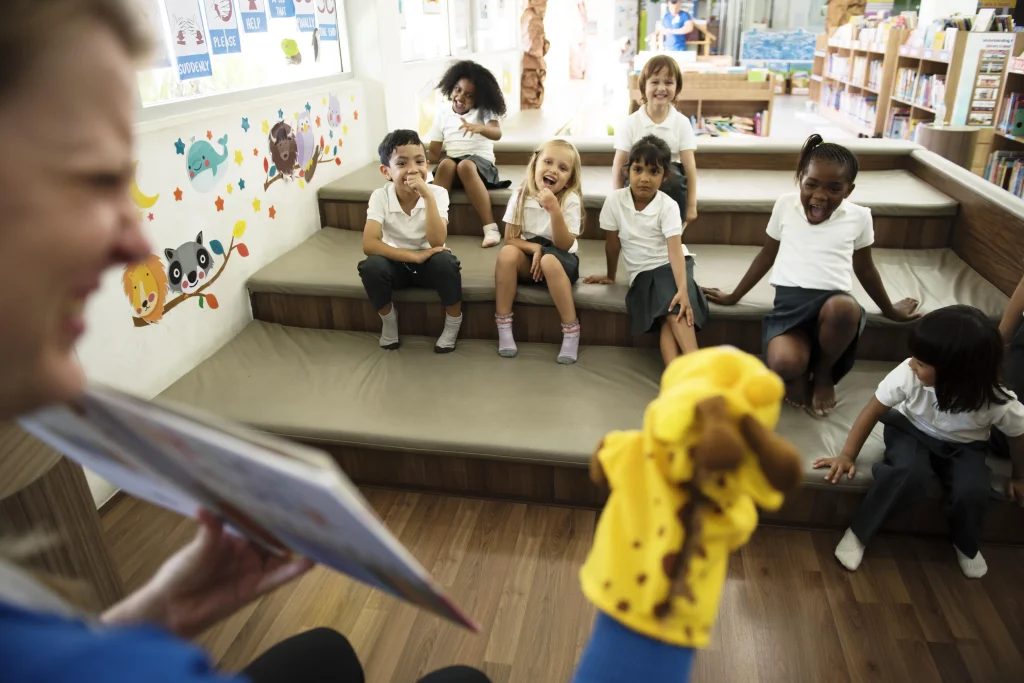In today’s dynamic early childhood education landscape, parents regularly face the difficult decision of whether to enroll their children in preschool or daycare. When factors such as residential real estate are considered, the decision becomes even more complex. As families navigate the complicated web of available options, it is necessary to weigh the advantages and disadvantages of both preschool and daycare, taking into account their child’s developmental needs, family lifestyle, and the broader context of their living circumstances.
Understanding the Impact of Residential Real Estate
Residential real estate has a significant impact on parents’ options for early schooling. A family’s house location can have a considerable impact on the proximity and accessibility of preschools and daycares. Urban places may have a profusion of possibilities within a small radius, whilst rural areas may have a more limited selection. Furthermore, the socioeconomic features of a neighborhood might influence the quality of early education services in the area.
The Influence of Socio-Economic Factors on Educational Options
Families living in neighborhoods with a strong real estate market may have more access to premium preschools and daycares. However, this does not necessarily imply that families in lower-income locations have fewer options. It emphasizes the need of taking into account the local community’s resources, since a well-established residential neighborhood may have a network of high-quality early education services.
Preschool: Fostering Academic Foundations

Preschools are intended to provide an organized educational environment that encourages cognitive, social, and emotional development. These facilities primarily serve children aged three to five years old, preparing them for the official education system. Preschool is frequently chosen because parents want to create a solid intellectual foundation throughout their children’s early years.
Proximity to Educational Excellence: The Impact of Residential Real Estate on Preschool Choice
One advantage of selecting a preschool that focuses on residential real estate is the potential access to top-tier educational institutions nearby. Parents may select communities with renowned elementary schools when contemplating the smooth transition from preschool to primary school. This alignment of residential real estate and educational possibilities can pave the way for a child’s long-term academic achievement.
Day Care: Nurturing Social and Emotional Growth

Daycare, on the other hand, focuses on providing a safe and caring environment for children while parents are at work. Daycare centers frequently cater to a wider age range, including infants and toddlers. They prioritize socializing, emotional development, and basic care needs, making them an appealing option for working parents.
Striking a Balance: The Intersection of Residential Real Estate and Daycare Options
In residential areas with a strong demand for childcare, the availability of reputable facilities may be an important consideration when choosing a community. Proximity to daycare centers can substantially improve the daily routine of busy parents, helping them to properly manage work and family life. Daycare alternatives may be more available for families living in urban areas with a thriving employment market, allowing them to seamlessly integrate childcare into their daily schedules.
Balancing Academic and Practical Considerations
The decision between preschool and daycare ultimately boils down to striking a balance between academic aspirations and practical considerations influenced by residential real estate. Some families may find that a combination of both options works best for their needs. This hybrid approach allows children to benefit from the structured learning environment of a preschool while also enjoying the social and emotional development fostered in daycare.
Community Integration: Beyond the Classroom and Into Daily Life
Choosing the best early education program is a complex decision that affects daily living in the residential community of choice as well as the classroom. Parents need to assess practical factors like travel times, after-school program availability, and the general lifestyle the area offers in addition to the immediate scholastic concerns. Both parents’ and kids’ daily routines and quality of life may be greatly impacted by these practical considerations.
Building Connections: The Role of Residential Real Estate in Community Dynamics

In places where residential real estate is thriving, there may be an influx of young families, fostering a sense of community and camaraderie. This can result in the formation of playgroups, parental support networks, and shared resources, which improve the overall experience of raising children. In contrast, economically challenged communities may have less resources accessible, requiring parents to be more proactive in seeking community help to augment their child’s educational path.
Cultural Diversity: A Catalyst for Social Development
Another issue to consider is the diversity of a residential neighborhood. Exposure to a wide variety of cultures and origins can help a child’s social development and comprehension of the world. Children in diverse areas may have the opportunity to engage with peers of other nationalities and origins, promoting a more open and tolerant worldview from a young age.
Outdoor Spaces and Recreational Facilities: Supporting Physical Development
Residential real estate can have an impact on the availability of outdoor spaces and recreational facilities. Access to parks, playgrounds, and community centers can help a child’s physical development while also providing opportunities for socialization. Parents may discover that areas with well-kept green spaces and recreational amenities provide an ideal environment for their child to explore, play, and develop a passion for an active lifestyle.
Community Commitment to Education: A Vital Consideration
Beyond the immediate vicinity, the larger community’s commitment to education and child development is critical. Some communities actively support local schools and early childhood education facilities through community activities, fundraising events, and volunteer opportunities. This communal investment in education can improve the quality of education and resources accessible to students in the community.
Property Values and Future Prospects: The Real Estate Impact
When considering the intersection of residential real estate and early education, it’s also essential to think about the long-term implications for property values. A neighborhood with strong educational institutions, whether preschools, daycares, or elementary schools, may see increased demand from families seeking a supportive environment for their children. This demand can contribute to a stable or appreciating real estate market, making the investment in a home more promising for the future.
Conclusion
Making the decision between daycare and preschool transcends the classroom and into the residential real estate market. Parents have a difficult task ahead of them as they consider the social, cultural, and intellectual factors that influence their child’s formative years. Parents can give their children a comprehensive and enriching experience that prepares them for a bright future by taking into account the alignment between the residential setting and the early education choice they have selected. In the end, residential life and education work together to create a supportive atmosphere where kids may flourish and families can form enduring bonds with one another.


